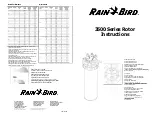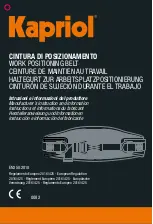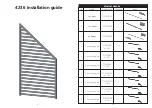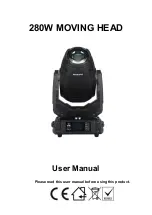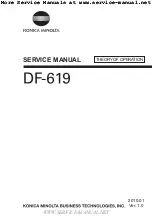
1
IM 701430-51E
1.
Connecting a Probe
Input Terminals
A probe (or an input cable such as a BNC cable) must be connected to one of the input
terminals* (CH1 to CH4) located on the lower section of the front panel.
The input impedance is 1 M
Ω
±
1.0% and approximately 20 pF or 50
Ω
±
1.0%.
*
The number of input terminals varies according to machine model.
CAUTION
• The maximum allowable input voltage is 400 V (DC + AC peak) or 282 Vrms
when the frequency is 1 kHz or less. Never input a voltage exceeding this level,
as it could damage the input section of the instrument. If the frequency exceeds
1 kHz, the input section may be damaged even when the voltage is below 400 V.
• The maximum allowable input voltage is 5 Vrms or 10 Vpeak when using 50-
Ω
input.
Never input voltage exceeding this level, as it could damage the input section of this
instrument.
CH
1
1 M
Ω
20 pF 400 Vpk
50
Ω
5 Vrms, 10 vPK
CAT
CH
2
CH
3
CH
4
Points to Note when Connecting a Probe
• When measuring the CAN Bus signal, connect to CH1 using a differential probe
(recommended differential probe: 701920 by YOKOGAWA). The power to the
differential probe (701920) can be connected to the “PROBE POWER” terminal on the
rear panel of the DL7200.
• When connecting a probe to the instrument for the first time, perform phase correction
of the probe as described in the section 3.5, “Compensating the Probe (Phase
Correction)” in the
DL7100/DL7200 User’s Manual IM701410-01E. Failure to do so
may result in unstable gain across different frequencies, thereby preventing correct
measurement. Calibration must be performed for each channel.
• If the object to be measured is connected to the instrument directly, without using a
probe, correct measurement cannot be performed due to the load effect.




















